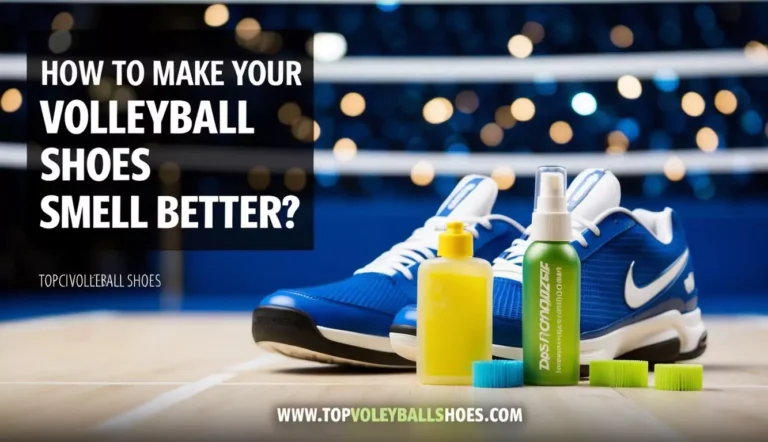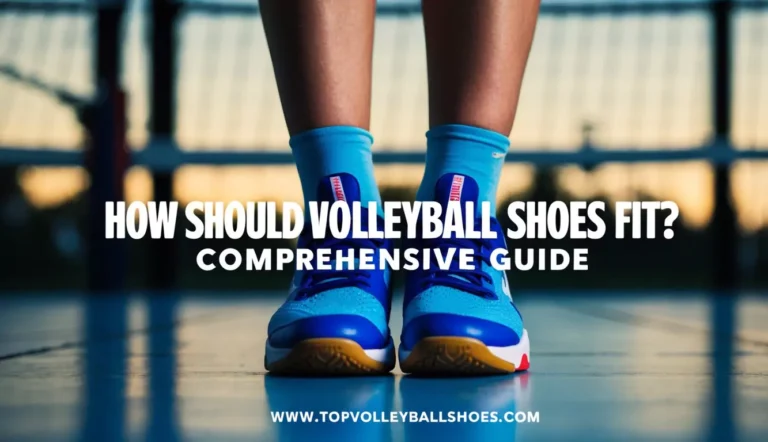What is a Dig in Volleyball? Types | Role | Techniques
In volleyball, defense is crucial, and one of the most important skills a player can master is the dig.
A dig is a defensive move that prevents the ball from hitting the ground after an opponent’s spike or attack.
This skill not only keeps the ball in play but also opens opportunities for transitioning into offense.
Understanding how to dig effectively can make a significant difference in a player’s performance and the overall success of the team.

Learning the various techniques and strategies for digging will enhance not only individual skills but also team dynamics.
I believe that by focusing on key aspects such as positioning and timing, players can improve their digging ability.
This move is not just about defense; it plays a vital role in creating scoring opportunities.
Key Takeaways
- A dig is essential for keeping the ball in play during volleyball.
- Effective digging requires proper technique and timing.
- Improving your dig can enhance both individual and team performance.
Understanding the Dig

In volleyball, a dig is a fundamental defensive move that can change the course of a game. It involves quick reflexes and proper technique to prevent the ball from touching the ground after an attack.
Below, I will explore the definition and importance of digs, the various types, and the essential role of the libero in this critical aspect of the game.
Definition and Importance of Dig in Volleyball
A dig is a defensive play in volleyball where a player successfully receives an opponent’s attack, keeping the ball in play.
This move is crucial because it helps maintain possession and can rally the team after a powerful spike.
The importance of a dig lies in its ability to shift momentum. An effective dig can energize a team and discourage the opposing players.
Mastering this skill not only improves individual performance but also strengthens the team’s defensive strategy.
Types of Volleyball Digs
There are several types of digs, each suited for different situations during a game. The three main types include:
- Traditional Dig: This involves using the forearms to create a platform for passing the ball. It’s commonly used for low attacks.
- Overhead Dig: Players use their hands to dig the ball when it comes from a higher angle, requiring good timing and hand positioning.
- Hand Dig: This is a more advanced move where players use their fingers to control the ball’s direction after a strong attack.
Understanding these types helps players choose the best technique based on the incoming ball’s speed and angle.
The Role of the Libero
The libero is a specialized defensive player in volleyball who wears a different color jersey. This player’s primary role is to improve the team’s defense by executing effective digs.
Liberos have to be quick and agile, making them crucial in receiving hard hits.
They have the ability to substitute in and out freely, allowing for fresh defensive plays without disrupting the rotation.
A skilled libero can enhance the entire team’s performance through strategic digging and solid ball control. Their experience and training in digging techniques are vital for any volleyball team.
Technical Aspects of Volleyball Digging

In volleyball, mastering the technical aspects of digging is crucial for making effective defensive plays. This includes proper positioning, footwork, and body control, which all contribute to successfully receiving attacks.
I will detail the techniques for digging various types of attacks to help improve your performance on the court.
Proper Positioning and Footwork
Effective digging starts with proper positioning. I always make sure to stay low with my knees bent and feet shoulder-width apart.
This stance allows me to react quickly.
Footwork is equally important. I focus on staying light on my feet while being ready to move in any direction.
This means using short, quick steps to adjust my position as the ball approaches.
Properly aligning myself with the path of the ball increases my chances of making a successful dig.
Hand and Body Control Techniques
Hand and body control are essential for executing a successful dig.
When I receive the ball, I ensure my hands are positioned to absorb the impact while keeping my arms out in front.
I also use my body to angle the ball where I want it to go.
My goal is to guide the ball safely to a teammate rather than just sending it back over.
For spikes, I use a tight fist, while for softer attacks like tipping, I keep my hands open to better cushion the ball.
Digging Different Types of Attacks
Different types of attacks require specific digging techniques.
For a powerful spike, I lower my body quickly and focus on positioning my hands to deflect the ball safely.
When facing a softer attack like a tip, I prepare to move in quickly and react.
I try to anticipate the player’s next move to position myself correctly.
This will help me control the ball better and set up a counterattack.
Strategies for Effective Defense

In volleyball, effective defense is crucial for converting opponent attacks into scoring opportunities. Proper techniques and strategies can significantly impact the game. Here are some key defensive strategies I find essential.
Positioning and Readiness
Proper positioning is the foundation of effective defense. I always ensure that my stance is low and ready to move.
This means bending my knees and keeping my feet shoulder-width apart.
I maintain a balanced position to help me react quickly, allowing for smoother movement.
I also focus on my body angle, which should face the net, providing a clear view of incoming attacks.
Being nimble is vital. I practice shifting my weight as needed, so I’m prepared for the ball’s direction.
This readiness can make a significant difference in dig statistics and overall effectiveness.
Anticipating the Attacking Team’s Moves
Anticipation is a key part of my defensive strategy. I study the attacking team’s tendencies to predict their next move.
Watching the hitters closely helps me identify their patterns.
I pay attention to body language and the hitter’s positioning as they prepare for their attack.
If I can gauge where they plan to hit, I can position myself better for an effective dig.
Quick decision-making is crucial here. I must shift my position based on the play’s unfolding dynamics.
This anticipation can lead to successful defensive maneuvers that thwart the opposing team’s scoring attempts.
Transitioning from Defense to Offense
Once I’ve made a successful dig, I immediately focus on transitioning to offense.
This requires quick thinking and effective communication with teammates. I call out for the ball to set up a counterattack.
It’s important for me to direct the ball to a teammate in a strong position. This helps in launching our offensive play quickly.
I practice my passing skills to ensure accuracy and speed during these transitions.
Effective communication with teammates is also crucial.
I often remind my teammates to be ready to capitalize on any openings created during the defensive play.
By prioritizing these elements, I can help our team maintain momentum and increase our chances of scoring.
Improving Your Dig

Improving my dig involves practicing specific drills, enhancing both mental and physical readiness, and analyzing my performance statistics. Each of these areas plays a vital role in my overall defensive skills and helps me execute effective digs during a game.
Practice Drills and Tips
To improve my dig, I focus on dedicated practice drills. Here are some effective ones:
- Wall Bounce Drill: I stand a few feet from a wall and toss the ball against it. This helps me work on my reaction time as I prepare for the rebound.
- Partner Drills: My training partner hits the ball at me. I focus on positioning and using proper techniques to dig the ball successfully.
- Target Practice: I place targets on the court where I want to pass the ball after a dig. This aids in developing my accuracy.
Consistent practice helps me build muscle memory and improve my body control.
I also make sure to focus on my footwork, as it plays a critical role in getting to the right position for a successful dig.
Mental and Physical Preparation
Mental focus is crucial for digging effectively. Before a match, I take time to visualize successful digs. This mental rehearsal helps me feel more prepared.
Physical preparation is equally important. I engage in exercises that strengthen my legs and core, which aids my overall stability and movement.
Stretching helps maintain flexibility, allowing me to react swiftly during a game.
I also practice mindfulness techniques to stay calm under pressure.
Staying focused on the play helps me read the opponent’s actions better and react accordingly.
Analyzing Dig and Passing Statistics
Keeping track of my dig statistics gives me insights into my performance. I record the number of successful digs and missed opportunities.
This allows me to identify patterns in my gameplay.
I also analyze my passing statistics after games. Understanding how well I pass after a dig helps me measure my effectiveness.
I look for trends, like which types of hits lead to successful digs.
By reflecting on these statistics, I can prioritize areas for improvement, adjust my training, and develop stronger defensive plays.
This ongoing analysis is key for enhancing my skills on the court.
Common Dig Variations and Adaptations

Understanding different types of digs is crucial for effective volleyball play. Each dig variation has its own purpose and technique, allowing players to adapt to various game situations.
Regular Dig vs. Diving Dig
The regular dig is a fundamental skill in volleyball. I use it when the ball comes at a manageable height and speed.
This type of dig involves positioning my body to create a solid platform with my forearms. By doing so, I can direct the ball upward to my teammates.
In contrast, the diving dig is necessary when the ball is too low or coming in fast.
It requires me to leave my feet and dive toward the ground. With this technique, I extend my arms to cushion the impact and redirect the ball.
Both digs are essential; knowing when to use one over the other can change the game’s momentum.
Overhead Dig and Its Applications
The overhead dig involves using my hands to play high balls or spikes that come straight at me. This technique is often used in situations where the ball is above my head.
I focus on maintaining proper hand positioning, which helps in guiding the ball to a teammate.
Overhead digs are useful for making controlled passes, especially when the ball comes from an attacker. I can also use this technique when I’m anticipating a high set, giving my team better chances for a successful attack.
Mastering this dig is essential for a well-rounded defensive strategy.
Side Dig and Situational Use
The side dig is another essential skill I rely on during matches. I use this dig when the ball is coming towards my side or when I have limited time to react.
For this, I turn my body to the side and position my forearms to create a solid platform.
This technique allows me to keep the ball in play while accommodating incoming spikes or tips. By mastering the side dig, I can effectively respond to various court positions and angles.
It becomes a vital tool to maintain the flow of the game and support my team’s defense.
Frequently Asked Questions

I often hear questions about digging in volleyball. Understanding how digs are performed, their techniques, and their differences from other moves can help players improve their game.
How is a dig performed in volleyball?
A dig is performed when a player anticipates an incoming spike or hit from an opponent. The player lowers their body, positioning themselves to either receive the ball with their forearms or hands.
Quick reflexes and proper body positioning are key to executing an effective dig.
What is the difference between a dig and a kill in volleyball?
A dig is a defensive move aimed at saving the ball from hitting the ground after an opponent’s attack. In contrast, a kill is an offensive play where a player successfully hits the ball in a way that the opposing team cannot return it.
Essentially, a dig focuses on defense, while a kill emphasizes scoring.
Can you describe the main types of digs used in volleyball?
There are several types of digs: the traditional dig, side dig, diving dig, and overhead dig. Each type fulfills a specific purpose and technique based on the ball’s trajectory and speed.
Knowing how and when to use these digs effectively can greatly enhance a player’s defensive skills.
What is the correct technique for executing a dig in volleyball?
To execute a proper dig, I make sure to bend my knees and lower my center of gravity. I keep my hands in front of me, often using my forearms to cushion the impact of the ball.
My eyes are always focused on the ball, ready to react to its movement and direction.
How is a dig different from a standard receive in volleyball?
A dig is primarily a response to an attacker’s hit, focusing on saving a difficult ball. On the other hand, a standard receive typically involves more controlled passes from a serve or an easier ball.
The technique and urgency vary between the two situations.
What are the official rules regarding a dig in volleyball competitions?
In official volleyball play, a dig is considered a legal move as long as the player does not carry or lift the ball. The ball should not touch the ground, and the player must handle it correctly according to the rules.
Each volleyball organization can have slight variations in how digs are judged during competitions.

As a US hitter with a passion for volleyball, I bring firsthand experience and insight into what makes the best volleyball shoes stand out. From powerful spikes to swift court movements, I know how crucial the right footwear is for peak performance.







